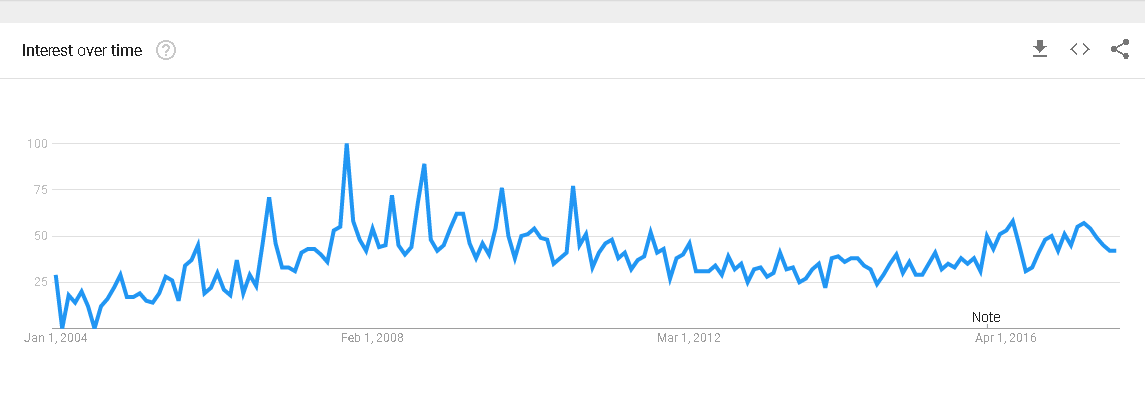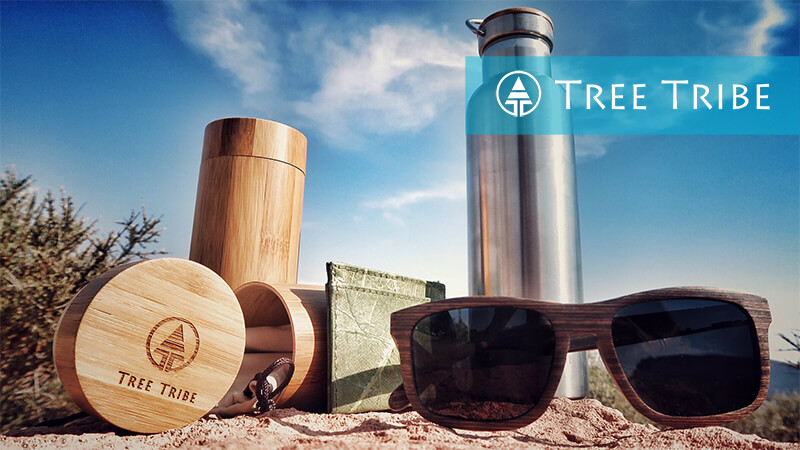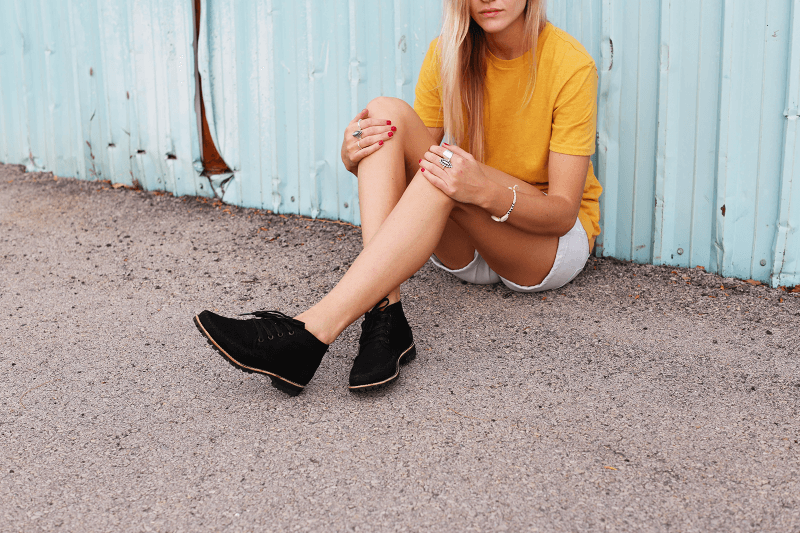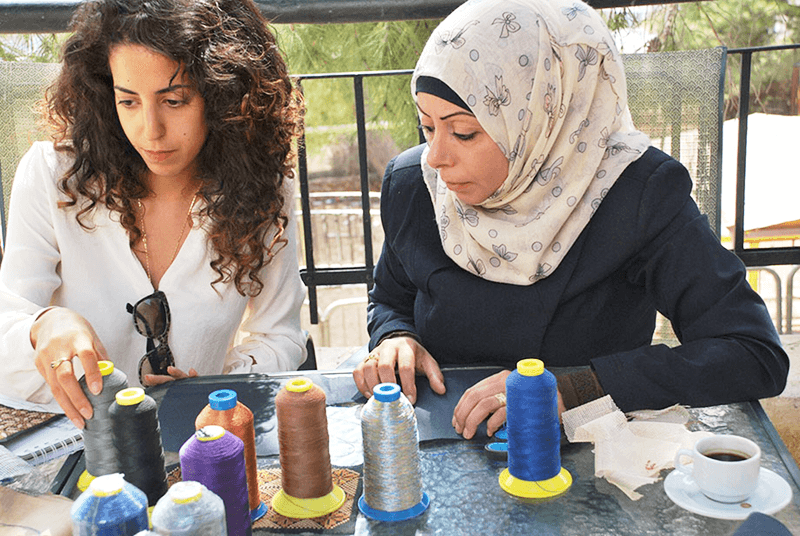The Current State of Ethical Fashion
The concept of ethical fashion has been in the periphery of progressive writers and bloggers for a while now. Ethical Fashion Forum, the first legitimate organization created with the purpose of establishing a network of resources to help companies produce clothes more ethically and bring visibility to such initiatives was established in 2005 and it remains one of the main global hubs of sourcing, training and collaboration for ethical fashion brands.
However, it is not clear that such initiatives have been successful from a sales perspective or that consumers are significantly more interested in ethical fashion. Here is a Google Trends chart showing interest in that search query from 2004 to present day.

Not necessarily a boom, if you ask me.
Making Ethical Fashion Happen (like fetch)
Anyone can understand the importance of moving to more sustainable sourcing practices and enforcing minimum labor standards, features that have defined the cause of ethical fashion. But in my mind, even years after the first time I heard of the concept in 2011, ethical fashion is still just that, a cause. Something that we should “get behind”, “support” and “feel good about”. Fashion has nothing to do with that. Fashion is superficial, unnecessary, irrational and selfish. Fashion tells you it’s ok to wear a hat with a bird on it on your wedding day or pay 50x the maximum reasonable price for shoes, just because fashion. Fashion is about aesthetic appreciation, design, individuality, an expression of who you are and a status symbol. The ethical features of a brand are not visible (or at least they shouldn’t be), so the combination of those two words seems dissonant: ethical [insert everything that is good and pure in this world – intangible]/fashion [superficial, irrational, overrated, material – tangible].
Is this why things “aren’t happening” for ethical fashion?
There are only a handful of companies I would consider ethical fashion that have “made it” in terms of brand recognition and sales. The common denominator between them: they do extraordinary marketing, understand their audience, produce high-quality products and don’t call themselves “ethical”. I’ve seen a few self-proclaimed ethical fashion companies come and go over the years, yet, I keep getting inquiries from new brands whose only strategy is saying they are sustainable or ethical. There is nothing sadder than going to the site of a brand I want to reconnect with and getting a notice from GoDaddy saying this domain is available.
Bad Fashion
Why is this a problem? The 1990’s trend to demonize large fashion conglomerates (recently revived by John Oliver) might have scared a few, but the reality is that big companies have taken steps towards more sustainable methods and better vendor standards. Even when there might be a decent amount of greenwashing, you have to admit that a giant corporation getting a little better over time has a bigger impact than indie labels claiming to be 100% green and ethical, due to their scale and the number of people they reach in their production cycle.
New ethical fashion labels that don’t have a good business model make it harder for anything labeled “ethical” to succeed in the future, as they impregnate those words with the smell of “another organic cotton t-shirt nobody wants”. In the meantime, the ultra fast fashion Missguideds of the world keep increasing their market share and building very powerful brands on the basis of influencer marketing that Gen Y and Gen Z live by.
Is Ethical Fashion Dead?
But there is hope in the horizon. Of course some businesses are going to fail, starting a company and building a brand is always a difficult endeavor, so it shouldn’t be any different for a sustainable or ethical fashion company. There are more sophisticated and innovative players in the industry making remarkable products and filling a real market need. Most of these labels focus on a single product or a limited selection of styles and this allows them to narrow their marketing efforts and simplify operations.
Tamay & Me, for example, is a brand of jackets made ethically in Ta Phin Village, Vietnam. Their first collection consists of only four main styles.
Our brand is all about high quality, fairly priced jackets. We do one thing. We make it well and we pay all our production line properly. We personally know who is growing our cotton. – Hannah Cowie from Tamay & Me.

Tamay & Me Indigo Jacket. Zero waste, handmade from organic cotton in Vietnam. Photo credit: Naomi Wood
…one thing I always say is that it’s great to have a brand that does great things, but you still need to focus on creating high quality products. -Joe from Treetribe

Treetribe plants 10 trees for every purchase you make.
“I perceive ethical fashion is doing better than ever, with more labels producing beautiful fashion that just so happens to be ethical.” -says Henrik Sætre, from Mamahuhu, an ethical footwear company. In regards to using the phrase “ethical fashion” for marketing purposes, Henrik says that they have thought about this and that ultimately, they use it “because our core value is doing what is right. In order for us to connect with our customers, this is what we must communicate, to find those who believe in the same thing.”

Mamahuhu is a brand of ethically crafter shoes made in Colombia
I would also add the social cause element (…) It’s the foundation of our business and over the past two years I’ve seen amazing response and connection with it. It’s really cool to build a community sharing in the common goal to help the environment and people of this world. -Joe from Treetribe

Two Neighbors. The Israeli sewing women are usually Russian Jews. They are in the lower end of the socioeconomic scale in Israel, the women in the West Bank that do the embroidery live in remote villages, some with minimal or no electricity.
Ethical Fashion: an oxymoron?
It’s still not clear if people care too much about how their clothes are made or if ethical fashion is ever going to be more than a cause and could become the standard, but one point in favor of this new industry is that people are integrating their values into their shopping habits more and more. It happens with food, and it’s slowly happening with other product categories.
The notion of something being “ethical” is completely subjective and its fueled by a Western definition of what is acceptable behavior. As consumers, it is still pretty much impossible to be sure about a company’s claims, since there aren’t enough international standards to verify the conditions in which clothes are made and most companies are self-regulated. Don’t get me wrong, I’m not calling for more government regulation, but for a kind of consumer regulation, where we demand more transparency from companies before we buy.
Is Fast Fashion the Enemy?
If the problem with fast fashion is over production, isn’t the weight of this burden on the consumers who demand such ridiculous quantities of new cheap clothes? Why are we blaming the companies, then?
Being a more conscious consumer is easier than you might think. Buying only what you really need is the one and only rule of conscious consumerism. Vintage is always the best first option. Buying timeless, high-quality products is the second.
The companies I cover are interesting first, ethical second. I do like the idea of discovering cool brands that operate differently and encourage a higher appreciation for fashion, rather than mindless trends, but I’m just not religious about it. Go ahead and search for ethical fashion brands, see what you like and what you don’t, and tell them. This feedback loop is necessary to create better products that more people would buy.
Ethical fashion is not dead. This is only the beginning (we just might not use those exact words).
